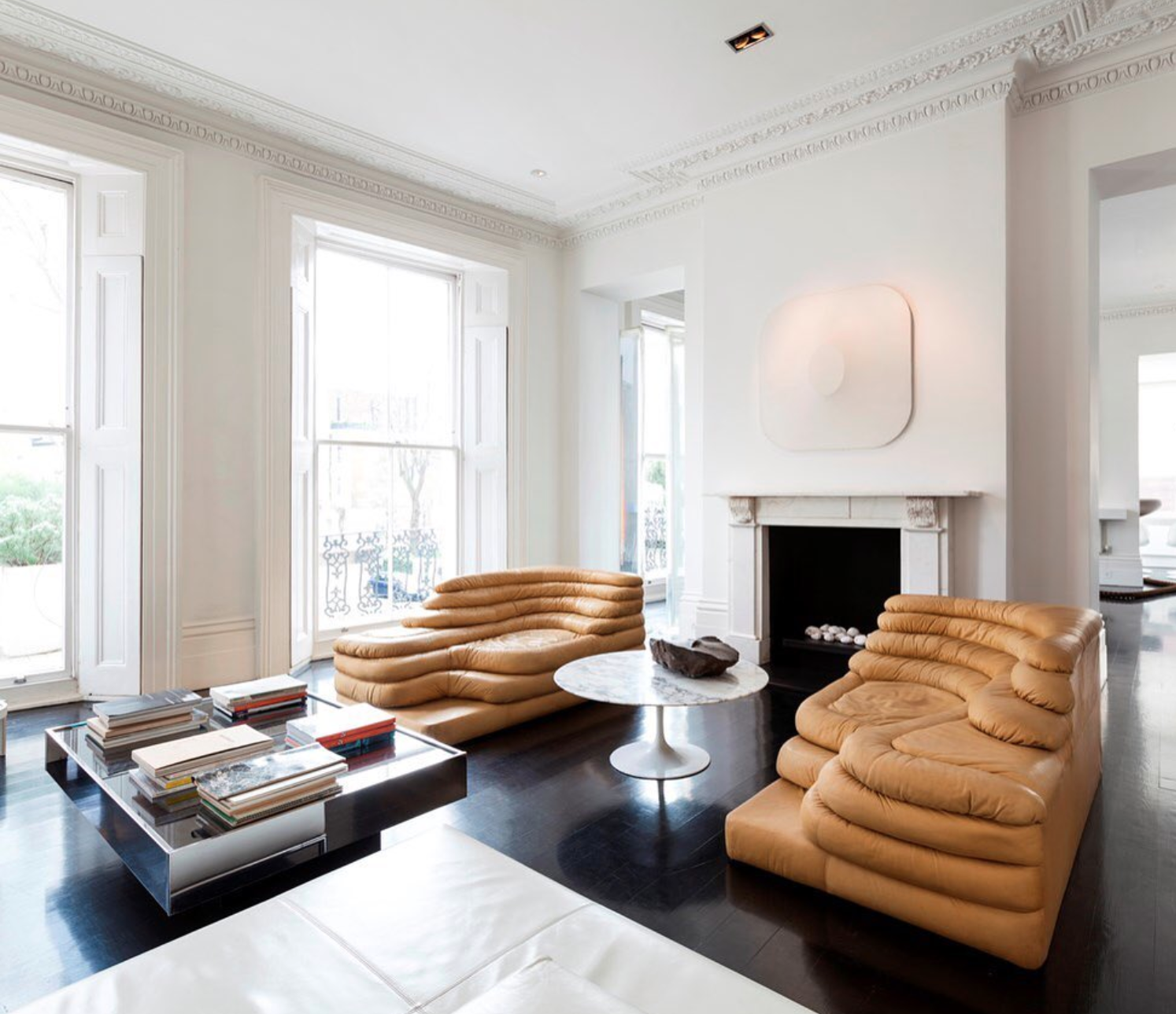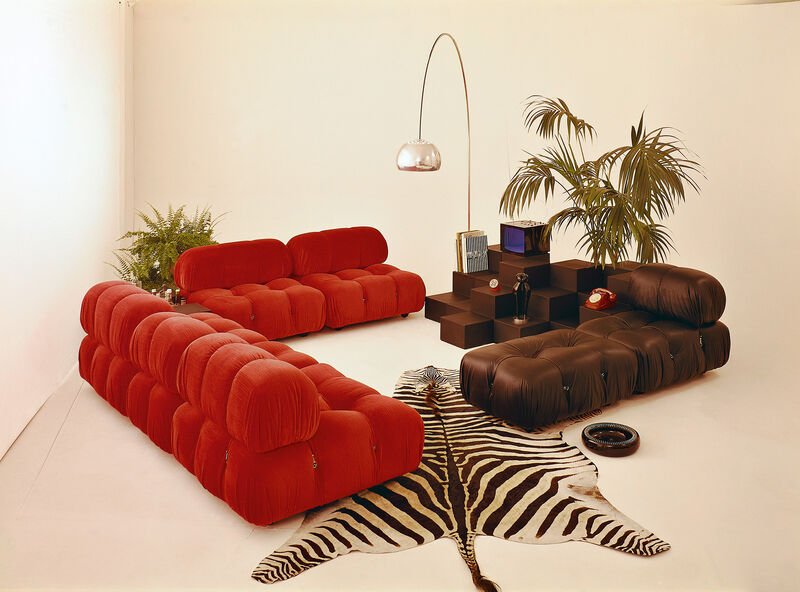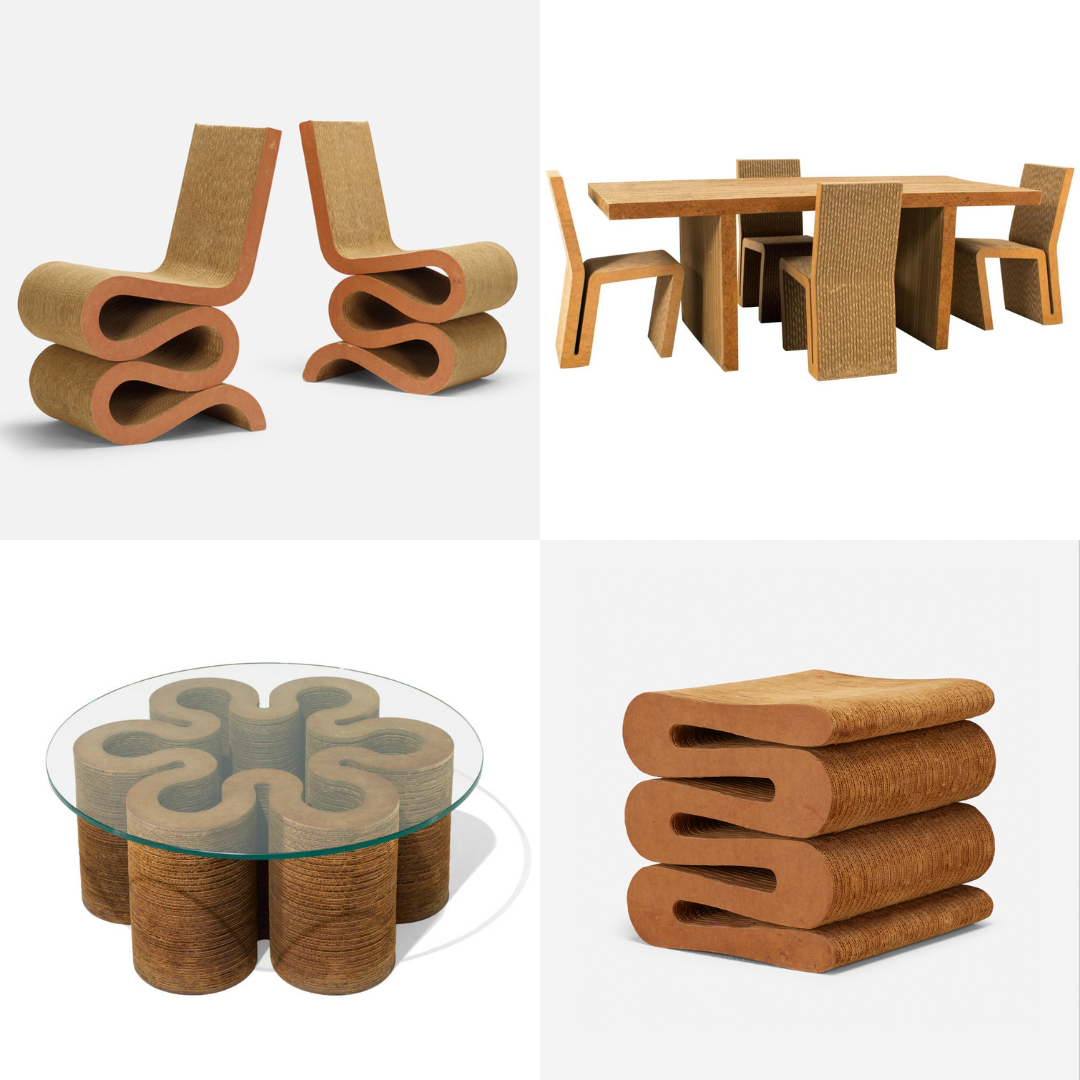The Trendy ‘Terrazza’ Sofa
Source: Museum of Design Zurich
Designed in 1973 by Swiss designer Ubald Klug, the ‘Terrazza’ or DS-1025 sofa has risen to international notoriety and landed itself in some of the most prominent homes around the world. From a-list celebrities to the top design professionals in the industry, we too just can’t get enough of this unconventional and groundbreaking design.
Tommy Hilfiger’s Media & Entertainment room. via William Abranowicz / Art + Commerce
The sofa is composed of seven leather-wrapped cushions stacked upon a rectangular base. The modular design allows for various configurations, giving the consumer a chance to become the designer.
One of Klug’s collaborators, Willi Glaeser gives us an inside scoop on the inspiration behind the iconic design, “He had the idea to produce a kind of mountain,” … “In the Alps the cows walk around leaving horizontal terraces. You see these patterns in this sofa.”
While many were impressed and intrigued with the otherworldly design, others were less enthused.
A critic at The New Yorker called it “a monstrous thing.” Renowned interior designer, Kelly Wearstler, is quoted saying, “There’s a playful aspect to these pieces. You can position them at will and crawl all over them. The craftsmanship is impeccable, the leather is sumptuously soft and the design proves comfort can be sexy. If I have a spare moment, I love to recline here with a stack of magazines.”
“I purchased it because I loved the way it looked,” says Swiss designer Yves Béhar, who lives with two in San Francisco, adding, “It’s the most comfortable thing in my home.”
Incredibly, even Mick Jagger and Aretha Franklin are photographed with the legendary design. It’s that good.
Designer Adam Charlap Hyman recently placed four Terrazza sofas in his LA bachelor pad and had this to say about the design, “They have this cheeky, orgy vibe and encourage all these weird ways of sitting,” … “It’s like something from outer space landed in your living room.” desede.ch
our favorite spaces featuring the Terrazza sofa:
About The Designer
“Ubald Klug was born in St. Gallen in 1932. From 1952 to 1955, he trained as an interior designer with Willy Guhl at the Kunstgewerbeschule. Following work placements with architects in Zurich and Helsinki, he joined sculptor François Stahly in Paris in 1958 for three years, and attended lectures by Jean Prouvé twice a half-year. Before finally settling in Paris in 1966, he was technical director of a sanitary ware and kitchen manufacturer in Bern. After a number of years as a designer in the Mafia agency, Ubald Klug started his own business as an interior architect and designer in 1972.
Ubald Klug's activities in interior design include work on exhibitions, trade fair stands, showrooms, shops and restaurants in France, Germany and Switzerland. He has designed products for the furniture, watch, textiles, glass and ceramics industries.
Ubald Klug has received various internationally prestigious design awards for his work, including the International Design Award of the State of Baden-Württemberg and the Swiss Design Prize. He has also received awards from the Design Zentrum Nordrhein Westfalen and Industrie Forum Design Hanover (Top 10, 1998).”
DISCLAIMER: THE MILLIE VINTAGE DOES NOT OWN ANY RIGHTS TO THESE PHOTOS. PLEASE NOTE THAT ALL IMAGES AND COPYRIGHT BELONGS TO THE ORIGINAL OWNERS. NO COPYRIGHT INFRINGEMENT INTENDED.




























































It’s no surprise that celebrities have the ability to acquire some of the most rare and incredible pieces of design. We are thrilled to see faces we look up to, enjoying vintage design as much as we do.